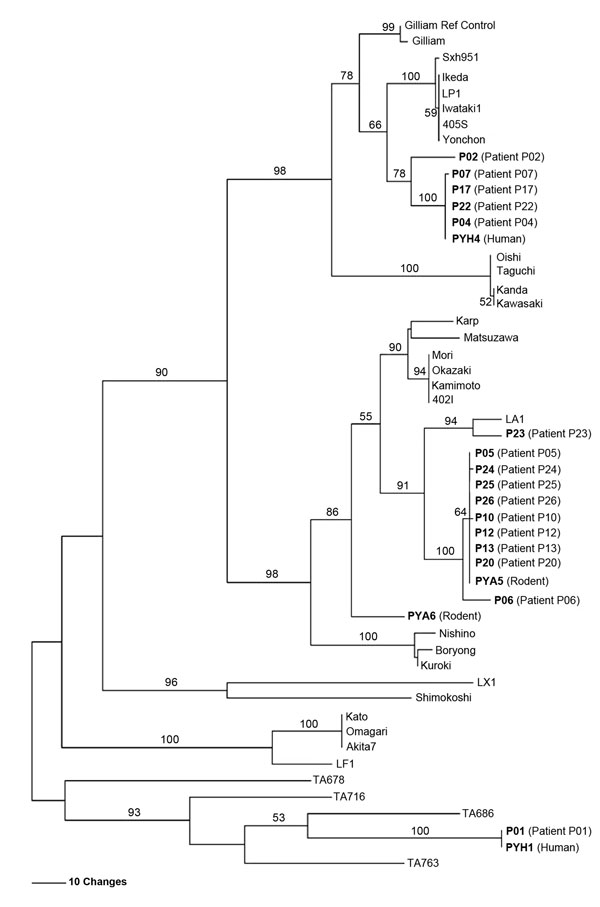Volume 19, Number 5—May 2013
Dispatch
Scrub Typhus Outbreak, Northern Thailand, 2006–2007
Figure 2

Figure 2. . . Maximum parsimony phylogenetic tree of Orientia tsutsugamushi based on partial 56-kDa type-specific antigen gene sequences, demonstrating the relationships among O. tsutsugamushi isolates from Thailand and strains causing scrub typhus in humans in Ban Pongyeang, Thailand, and reference (ref) strains. The tree was midpoint rooted. Bootstrap values >50% are labeled over branches (1,000 replicates). Isolates from Thailand are in boldface. The tree was generated by using heuristic search with random stepwise addition (10 replicates). Scale bar indicates nucleotide substitutions per site.
Page created: April 16, 2013
Page updated: April 16, 2013
Page reviewed: April 16, 2013
The conclusions, findings, and opinions expressed by authors contributing to this journal do not necessarily reflect the official position of the U.S. Department of Health and Human Services, the Public Health Service, the Centers for Disease Control and Prevention, or the authors' affiliated institutions. Use of trade names is for identification only and does not imply endorsement by any of the groups named above.